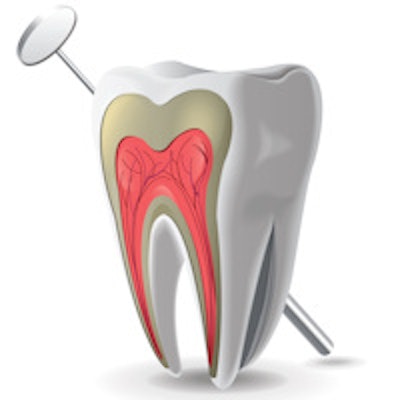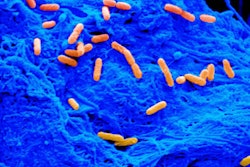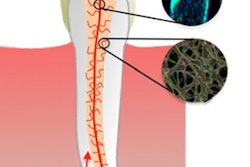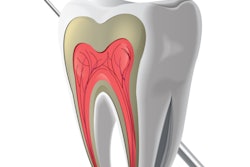
A new review study by researchers in India has analyzed the effectiveness of calcium-enriched mixture (CEM) cement in endodontic applications. They published their findings in Restorative Dentistry and Endodontics (November 3, 2014).
Bioceramic materials are, simply, biocompatible ceramic materials that are used in both dentistry and medicine. The family of these materials includes alumina, zirconia, bioactive glass, glass ceramics, calcium silicates, hydroxyapatite, and resorbable calcium phosphate, among others. These have mainly been used for dental implants before they were introduced into endodontic treatments. Now, these materials are used for pulp capping, apexogenesis, apexification, and furcation repair, according to the study authors from the Maulana Azad Institute of Dental Sciences in New Delhi.
CEM is one of the latest advancements in bioceramic technology, according to the authors. Introduced in 2006, CEM cement has a different chemical composition from that of mineral trioxide aggregate (MTA) but has similar clinical applications, they noted. It combines the biocompatibility of MTA with more efficient characteristics, such as a significantly shorter setting time, good handling characteristics, no staining of tooth, and effective seal against bacterial leakage.
Bioceramics can be placed in one of three classifications:
- Bioinert (noninteractive with biological systems)
- Bioactive (durable tissues that can undergo interfacial interactions with surrounding tissue)
- Biodegradable, soluble, or resorbable: Eventually replaced or incorporated into tissue
“CEM cement combines the biocompatibility of MTA with more efficient characteristics, such as a significantly shorter setting time.”
Among the features that have led to the widespread use of bioceramics are its absolute biocompatibility, osseoconductivity, ability to achieve excellent hermetic seal, formation of chemical bond with the tooth structure, insolubility in tissue fluids, good radiopacity, and easy handling characteristics, according to the authors.
They conducted a literature review from peer-reviewed journals published in English for bioceramic materials in endodontics from January 2006 through December 2013.
The composition, biological, antibacterial, and microleakage properties of CEM cement in previous studies were noted. CEM cement has demonstrated "an antibacterial effect comparable to calcium hydroxide (CH) and better than MTA or Portland cement (PC)" in studies, the authors stated. In one study, an agar diffusion test on CEM, MTA, and CH against Pseudomonas aeruginosa, E. faecalis, Staphylococcus aureus, and Escherichia coli, CEM and CH both caused greater growth-inhibited zones of tested bacteria than MTA (Iranian Endodontic Journal, Fall 2007, Vol. 2:3, pp. 105-109).
The results from the 2007 study were backed by another that compared the antimicrobial activities of CH, gray MTA (GMTA), white MTA (WMTA), PC, and CEM on the same species of microorganisms, which found a "significant difference" between CH and CEM in comparison with MTA and PC groups (Journal of Oral Science, December 2008, Vol. 50:4, pp. 469-474).
The results of CEM cement in comparison with MTA "indicated the potentiality of CEM cement usage as antibacterial agent," according to the current study authors.
In terms of biocompatibility, multiple studies stated that the biocompatibility of CEM has been associated "with its ability to release calcium ions during setting, and the subsequent binding of calcium with phosphorus to form hydroxyapatite crystals," the authors noted. CEM is "more likely to cause alterations in cellular enzymic activity" than to change permeability, which facilitates healing, they added.
The authors noted that multiple studies have proposed CEM as a potent bioceramic material and an alternative to MTA for pulp capping, pulpotomy for primary teeth, root-end filling, apical barrier formation for teeth with necrotic pulps and open apexes, perforation repair, and apexification.
While many of the studies summarized were case reports, two randomized controlled prospective clinical trials of pulp-capped primary molar teeth used either CEM or MTA. The first reported clinical and radiographic success rates after six months for both materials with no pain, swelling, tenderness to percussion, or pathologic luxation observed in any of the studied teeth, with the exception of one tooth treated with CEM cement "showing a sinus tract." The authors also noted that no radiographic failure was observed in either group at six months. Another study showed that CEM and MTA exhibit similar and acceptable outcomes in direct pulp-capping treatment of human deciduous molars.
CEM cement combines the biocompatibility of MTA with more efficient characteristics, such as a significantly shorter setting time, good handling characteristics, and no tooth staining, and is able to induce hard-tissue formation, has an antibacterial effect, and forms an effective seal against entrance of microorganisms, the study authors concluded. However, they noted that future investigations with a high level of evidence are needed to evaluate the actual effect of CEM in various clinical applications and to confirm its efficacy compared with other materials.



















